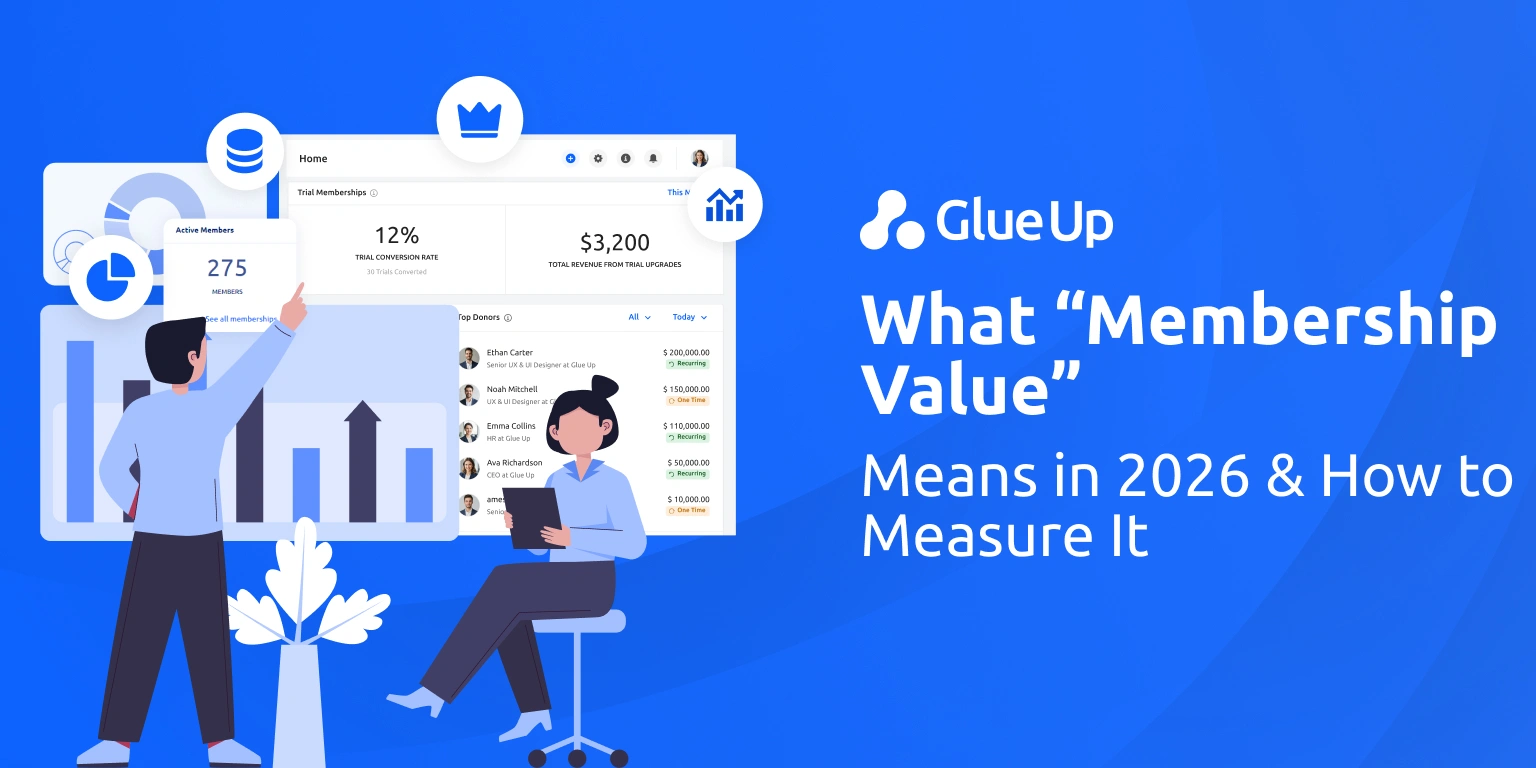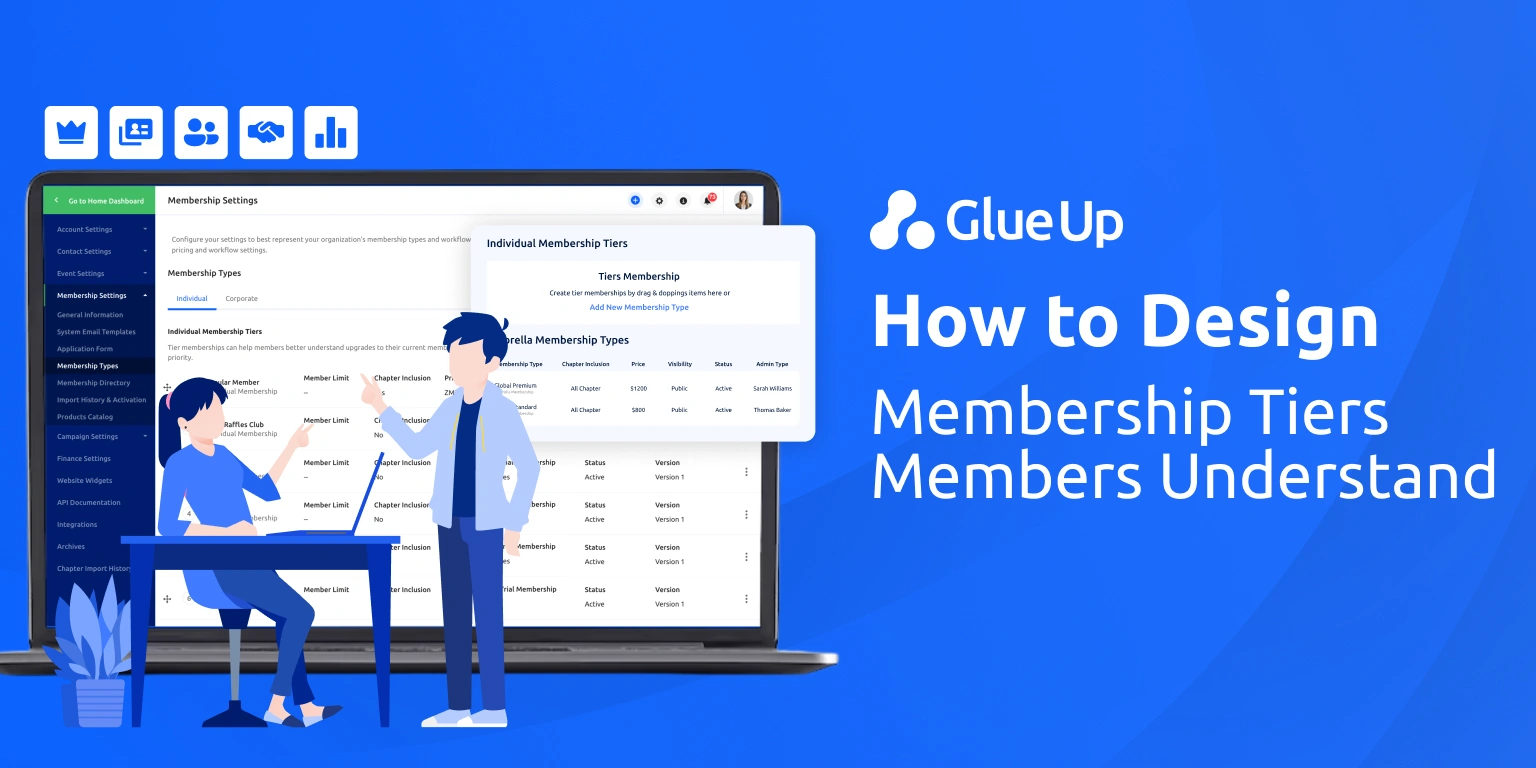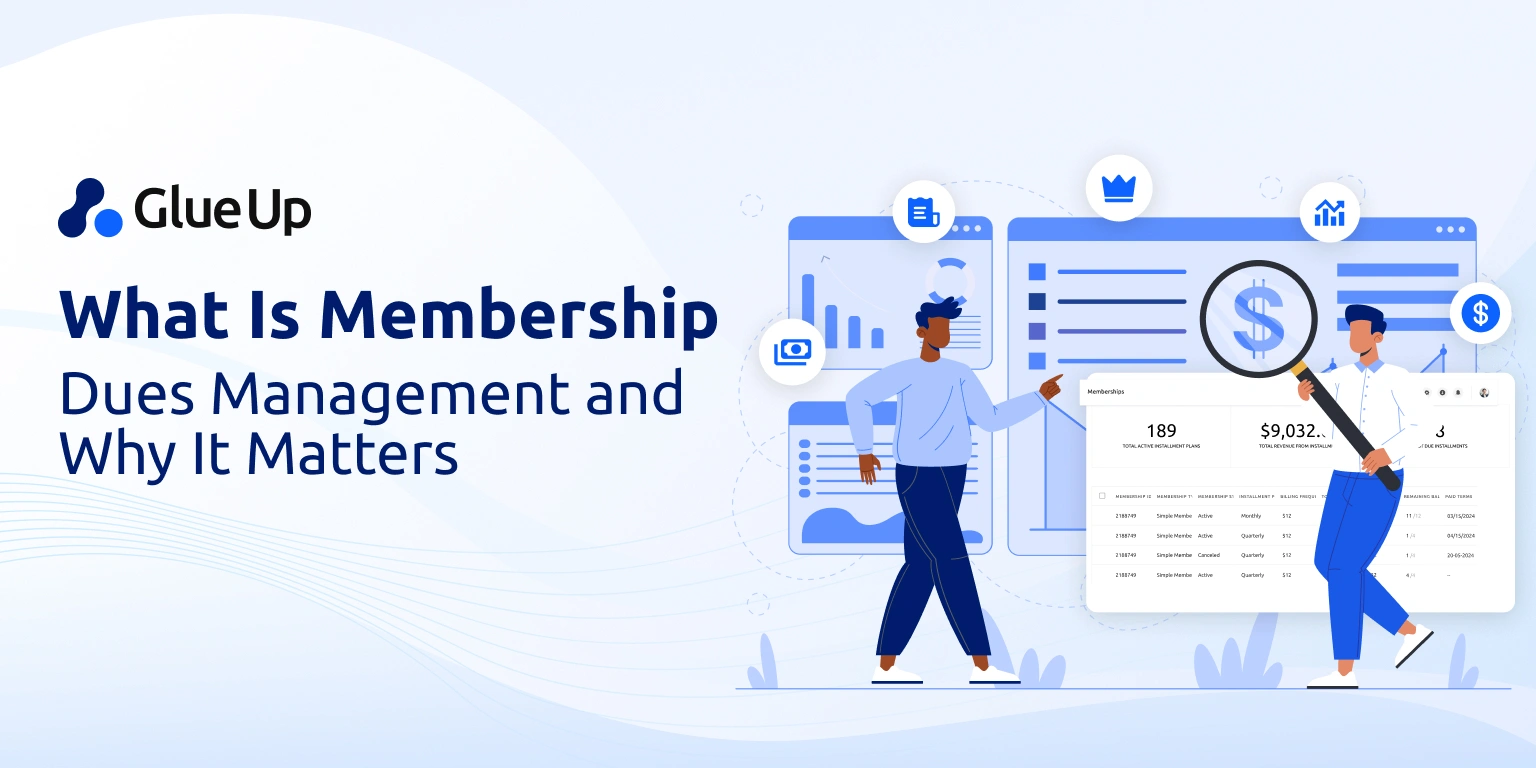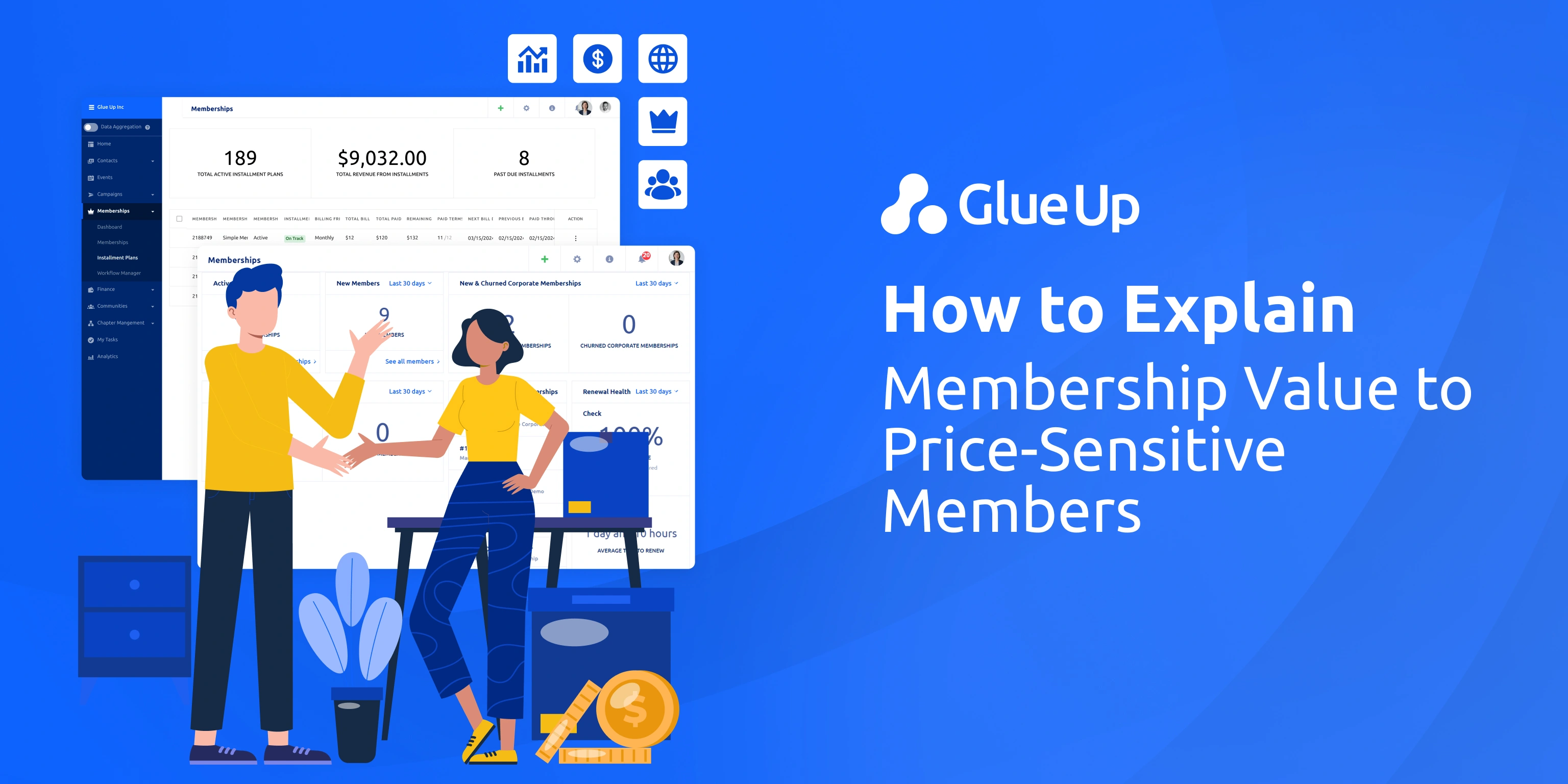
Every year, associations face a tough question: how to explain membership value to professionals who are increasingly price sensitive. On the surface, it might look like a question of fees, but anyone leading an organization knows the calculus runs deeper. After all, it's not like joining a gym or club where access is obvious and low-risk.
Research by Qualtrics shows top-performing organizations that use pricing strategies grounded in value perception outperform peers in revenue and member satisfaction.
When someone considers joining or renewing, they weigh not just cost but time, energy, opportunity, and credibility. For sponsors, donors, or high-value professionals, the stakes extend even further: visibility, influence, and measurable outcomes.
In this article, you'll get clear on the psychology behind price sensitivity, learn how to position membership value so it resonates, and see how tools, including our all-in-one membership management software, help you deliver on that value without overpromising.
Watch the video below for a quick glimpse and book a demo to get started today:
Key Takeaways
- Price sensitivity isn't about the number on the invoice, it's about whether outcomes justify the investment.
- Members calculate value across money, time, energy, and reputation, not just cost.
- Explaining value means shifting the conversation from features to results and being transparent about where dues go.
- Segmenting communication ensures sponsors, donors, and professionals each hear the benefits that matter to them.
- Glue Up helps prove value by consolidating renewals, events, payments, and engagement into measurable outcomes.
Understanding Price Sensitivity in Memberships
Price sensitivity is often treated as a simple equation: raise fees, lose members. But in reality, it's a far more nuanced measure of how people perceive membership value relative to cost. In consumer markets, price sensitivity reflects willingness to pay for a product or service. Within associations, it reflects a member's judgment of whether the professional, social, and reputational returns justify their investment.
The psychology is critical here. Members aren't choosing between your association and nothing. They're choosing between your association and every other use of their money, time, and energy. When the perceived gap between what they give and what they get widens, price sensitivity rises. So, when the value is clear and tangible, it falls.
Associations that fail to recognize this dynamic often misinterpret churn as a problem of price alone. In truth, it's usually a failure of communication: benefits aren't articulated in ways that align with members' priorities. A sponsor doesn't just want exposure; they want measurable engagement. A professional doesn't just want events; they want career advancement and connections that accelerate growth.
This is why understanding price sensitivity isn't about chasing discounts. It's about reading it as a signal, reflecting how well your organization has aligned its offerings with the outcomes members value. That shift in perspective is what separates organizations that constantly defend their fees from those that rarely need to.
Why Membership Value Goes Beyond Fees
It's tempting to think of membership value only in financial terms. But for your members, value extends far beyond the invoice. They're calculating whether the time they spend attending events, the energy they devote to networking, and the trust they place in your organization lead to outcomes that matter.
This is where many associations get caught off guard. If the experience feels transactional, members compare your fees directly to other options in the market. But when the experience feels like an investment in their growth, their network, or their influence, the calculus changes.
- Sponsors don't just weigh the cost of a package; they measure whether it opens doors.
- Donors don't just consider the size of their contribution; they want to see an impact that aligns with their priorities.
- Professionals don't just look at dues; they ask if the membership accelerates their career or expands access.
Consumers pay more when they perceive higher value. PwC reports that 43% will pay more for greater convenience, 42% will pay more for a friendly experience, and 73% say experience influences purchase decisions. The same logic applies to membership renewals: sensitivity to dues falls when outcomes are clear and felt.
So, if the answer to "Does this membership deliver what I need?" is unclear, price becomes the focus. If the answer is yes, the price fades into the background. That's why your real task isn't to defend a number, it's to articulate outcomes that members can see, feel, and measure. When you shift the conversation from "what dues cost" to "what membership delivers," you stop negotiating price and start reinforcing value.
How to Explain Membership Value to Price-Sensitive Members
Now that you understand why price sensitivity is less about numbers and more about perception, let's focus on how to make membership value tangible for those who scrutinize it most:
Frame Value in Terms of Outcomes
Members don't buy access, they buy results. Hence, a networking event is a chance to secure partnerships that could define a fiscal year. Similarly, a learning session isn't a webinar; it's the professional edge that advances careers.
Research from Deloitte shows organizations that communicate outcomes rather than features see higher loyalty and willingness to pay premiums. The same principle applies to your membership model.
Be Transparent About Dues
Uncertainty creates resistance. Explaining where dues go (advocacy, research, professional development, etc.) helps members see them as investments, not overhead. According to SAP Emarsys, 94% of consumers are more loyal to transparent brands. The same logic applies to associations: transparency strengthens retention.
Tailor communication to member segments
Sponsors, donors, and professionals don't value the same things. Each group needs messaging that speaks to its goals. McKinsey found that personalization can deliver 5–8x the ROI on marketing spend and lift sales by 10% or more (McKinsey). The same applies here: tailoring value communication to segments ensures relevance.
Support Your Claims with Data
Even compelling narratives fall short without proof. Renewal rates, engagement metrics, or participation benchmarks give members concrete evidence of value. A PWC Study shows 79% of global executives believe analytics improve decision-making across their organizations. If data drives executive trust, it can just as easily reinforce your membership's ROI.
How Glue Up Helps You Deliver Membership Value
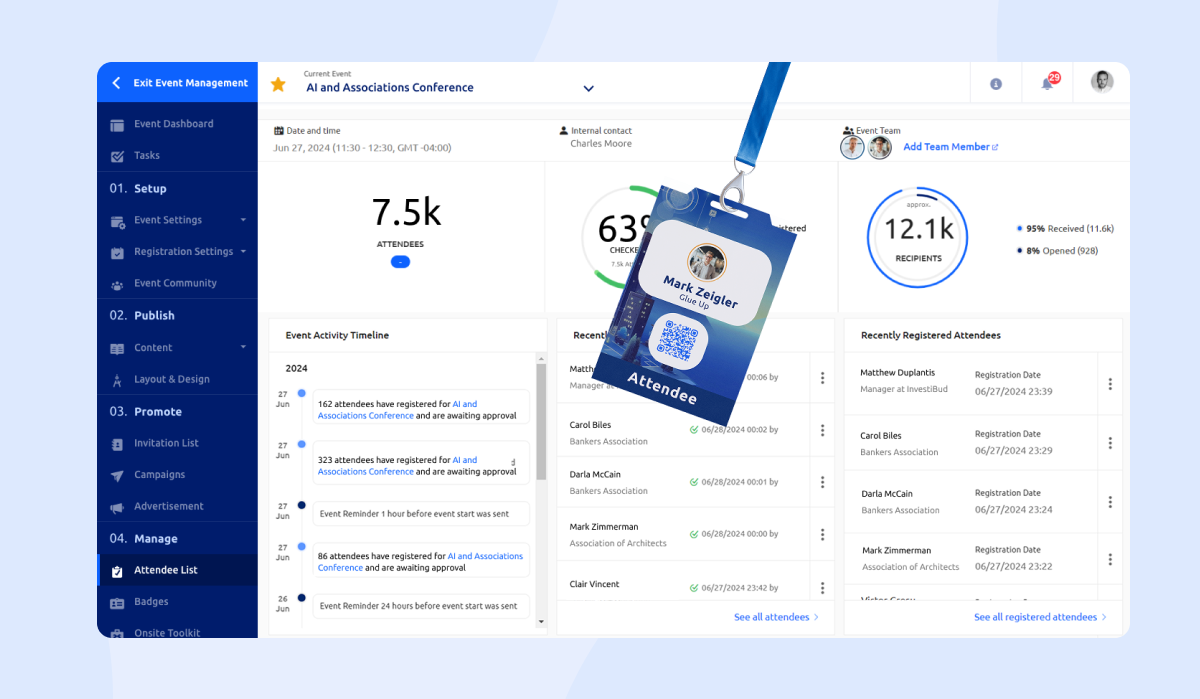
You can explain value well, but members also need to experience it. That's where your systems either reinforce the story or undermine it. If renewals are confusing, event information is scattered, or communication feels generic, price becomes the focus. Glue Up's all-in-one membership management software for associations and chambers reduces those friction points, so the value is clear.
- Membership registration forms and agreements keep enrollment structured, making it easy for new members to understand commitments from day one.
- Smart lists for segmentation help you target communication based on engagement, role, or renewal status, so messages feel relevant.
- Engagement scoring consolidates data across events, email activity, payments, and community participation, showing who's active and who may need attention.
- Event pages and mobile check-in simplify participation, while integrated payments keep attendance and revenue in one place.
- Surveys and community management give members a dedicated space to exchange ideas and provide feedback, cutting through the noise of email and social media.
- Email campaigns allow you to track open rates and click-throughs, showing you which messages resonate with your members.
- Finance and invoicing tools provide clear records of dues, receipts, and payment history, giving members transparency and associations better cash flow visibility.
- Reporting and performance tracking bring together insights on renewals, event participation, and campaign results, so you can measure what's working and communicate that impact back to stakeholders.
Each feature serves the same purpose: demonstrating that membership isn't just a cost, it's an investment that delivers measurable outcomes.
Book a demo to see how 1,500+ member-based organizations use Glue Up to simplify operations and make value visible.
Frequently Asked Questions
What is membership value?
Membership value is the perceived return members receive relative to their dues. It includes networking, professional growth, credibility, and the efficiency of interactions, not just financial benefits.
Why are members price sensitive?
Price sensitivity arises when the value isn't clear. Members aren't comparing your fees to zero; they're comparing them to other investments of time, money, and energy that could offer greater return.
How can associations explain fees to members?
By showing outcomes. Instead of listing features, demonstrate how events drive contracts, how communities support learning, and how renewals sustain advocacy. Clear allocation of dues also helps reduce resistance.
How do you measure membership ROI?
Through participation rates, renewal percentages, event revenue, survey responses, and engagement scores. These metrics show both individual and organizational impact.
What role does software play in proving value?
Membership management software centralizes data on renewals, engagement, payments, and communications. This allows associations to present transparent, measurable results instead of abstract promises.
Quick Reads
- Add-On Cart for Member Retention & Growth
- Simplify Multi-Currency Payment Posting for Community Chapters With Glue Up + Paygage
- AI Automation for Event Registration & Beyond
- Integrating AI into CRM for Membership Growth
- How to Build a Chapter Event Calendar
- What Is All-In-One Association Software?
- AI-Powered Member Check-In Software

